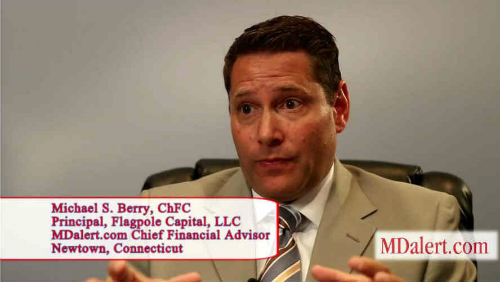Financial advisory team provided a sophisticated dermatology practice in-depth re-evaluations of:
- Personally held investments and asset allocation.
- Retirement planning for partners and employees.
- Cash flow statements and balance sheets.
- Personal catastrophic planning.
- Insurance product analysis.
- Educational funding.
- Estate tax management.
- Philanthropy.
- Corporate planning.
- Risk Management.
By engaging an innovative team of financial advisor and planners, a successful plastic surgery and aesthetics practice was able to reduce its tax burden, cut costs, retain more of its earnings, and provide for the retirement plans of its partners and employees. The investment in the services of the financial advisory team paid significant dividends to the practice (Figure 1).

It is well known among expert financial planners that the most significant erosion of wealth occurs in 3 ways:
- Taxation
- Disability
- Fees and costs
With these three threats to wealth in mind, the planners go about constructing a strategy to legally reduce taxes, to obtain the richest possible disability insurance, and to reduce or eliminate fees and costs related to earning and retaining wealth.
Partners at Different Places in Life
One of the greatest challenges in financial planning for a group practice is that, generally, each of the partners is at a different place in life. In this case, two of the partners were going through the personal turmoil of divorce and needed cash for legal settlements. Two were young physicians who were just getting settled into their careers and were hoping for stability for their young families. Two of the partners were nearing retirement and were hoping for a buy-sell agreement that would be rich enough for a comfortable lifestyle after they stopped working. Further complicating the picture was the fact that the financial plan had to benefit the nearly 80 employees at the six practice locations in throughout the state.

In the end, the advisors were able were able to provide for the diverse needs of the partners, to secure a more beneficial financial position for the practice and its employees, to streamline the finances, and to enable the partners and the employees to look forward to a richer retirement.
Specific Actions
In order to maximize the financial success of this practice, its partners, and employees. The financial advisory firm, Michael Scott Financial, undertook a number of specific actions. Among them:
- Analysis of personally held investments and asset allocation. This analysis included an evaluation of the past performance of the investments with a particular focus on asset allocation, management fees, and an assessment of the relationship between the current investments and their relationship to the overall financial plan.
- An evaluation of retirement planning for partners and employees. Current and projected qualified retirement plan (QRP) benefits including company sponsored plans (401k, profit sharing, and pensions) were evaluated. The advisors examined the fees associated with managing these plans and found numerous strategies for reducing the cost of operating the plans. They also introduced alternative methods of retirement funding and made recommendations to help the partners and employees reach their retirement goals efficiently and effectively. By employing the strategies of the financial planning team, the partners were able to retain an additional $500,000 (pre-tax) in retirement plans. This yielded a tax saving of approximately $150,000 annually.
- Cash flow statements and balance sheets. The planners worked with the partners to develop a personal cash flow model in order to anticipate future cash flow needs and identify the capacity for future wealth accumulation.
- Personal catastrophic planning. In order to cover every conceivable financial situation, the planners included an examination of various potential risks to the wealth status of each partner’s family. This was essentially a deep evaluation of financial security of each family that yielded recommendations to shield the family from risks to the greatest possible degree.
- Insurance product analysis. One of the essential underpinnings of a strong and secure financial plan is insurance. In this case, the planners conducted an evaluation of current life, disability, and long-term care insurance policies. They then compared existing policies to alternative products, with tax, asset protection, retirement, estate planning, and wealth accumulation goals in mind. In this case, the planners were able to identify a number of improvements over the practice’s current insurance status. For instance, the partners were able to secure an additional $15,000 per month in disability insurance with no underwriting
- Educational funding. A number of the partners in this practice had small children or children who were nearing college age. The planners employed 529 plans and other alternatives that enabled the partners to legally avoid some taxes while saving substantially for college for their children.
- Tax analysis. Taxes are one of the 3 most important factors in retaining earnings and building wealth. If taxes are not managed properly they can lead to highly significant erosion of wealth. In this case, the partners were lucky that the planners were able to implement a wide range of strategies to reduce taxation. These include funding a qualified retirement plan, funding a 529 education plan, purchasing cash value life insurance, and trading high salary for year-end bonuses, among many others.
- Estate tax management. including a review by independently –contracted Trusts & Estate Tax attorney. Discuss projection of estate taxes and present recommendations for reducing unnecessary taxes, and discuss the most efficient choices for paying any unavoidable taxes, and discuss coordination of annual exclusion and unified gifting programs.
- Philanthropy. Analyze, organize and develop gifting strategies that benefit the charity, donor, and the donor’s family with the very highest level of financial safety. If necessary, we may consult with an independently –contracted Philanthropy specialist.
- eMoney Advisor Planning tools. Full view of your financial picture, personal and secure web page, organize and consolidate all your financial accounts, balances tracked and updated daily, create budgets, customized financial plans, consolidate and store all important documents in the secure “vault.”
- Corporate planning. evaluate current corporate structure, partnership agreements, buy/sell agreements, analyze the potential advantages and disadvantages of using multiple corporate entities; analyze current corporate qualified and non-qualified benefit/retirement plans and compare to alternatives that may provide additional tax efficiencies, cost efficiencies, and overall benefit to owners and employees.
- Risk Management. The planning team identified potential corporate uninsured and underinsured risks, including an examination of business overhead and disability risk, liability risk, and using a captive insurance company to insure various financial, legal, environmental risks to your operating business. For $216,000 per year over 10 years ($2.16mm) the principals were able to secure $30,000,000 of life insurance to accomplish the following:
- Buy-sell requirements to cover a departure or the death of partner;
- Supplement retirement funding;
- Tax deferral of cash values;
- Exit strategy of practice; and,
- Asset protection.
- Maximize profitability. The financial advisory team helped to identify revenue cycle profit leaks, excessive credit card processing fees, and overpayment of business taxes. By implanting an improved qualified retirement plan, by combining the 401k plan, safe harbor match, profit sharing, and cash balance plans… the principals of the practice were able to save $325,100 in current taxation. More importantly, the principals are contributing $812,750 in a tax deferred strategy thus enhancing their retirement savings. Additional results of improved profitability consulting:
- 15% savings on credit card processing’
- Disability protection – each partner was able to acquire an additional $15,000/month of tax-free disability income benefit supplementing what the plan that was already in force. They were able to acquire this coverage as part of a guaranteed issued, with no exam and no medical underwriting.
- Own occupation specialty definitions for physicians’ disability insurance plans.
Conclusions
When the advisors began their review they found that many aspects of the practice’s financial plan had been cobbled together over time as the practice grew and changed, and as partners came and went. The diverse components did not function as efficiently as they could as a cohesive plan. The fundamental objective of the financial analysis was to coordinate all aspects of the practice financials. By orchestrating this coordination, the advisors were able to significantly improve the efficiency of the overall financial plan, to seal profitability leaks, to save money for the practice, to reduce risk, and to ensure rich retirement plans for the partners.
The improved efficiency enabled the partners to earn more, to keep more of what they earned, and to save more for retirement for themselves and their employees.
Use our "Ask Mike" feature if you'd like to pose a financial question to the lead financial advisor in this case, Michael Berry. Mr. Berry serves on the advisory board for MDalert.com.
